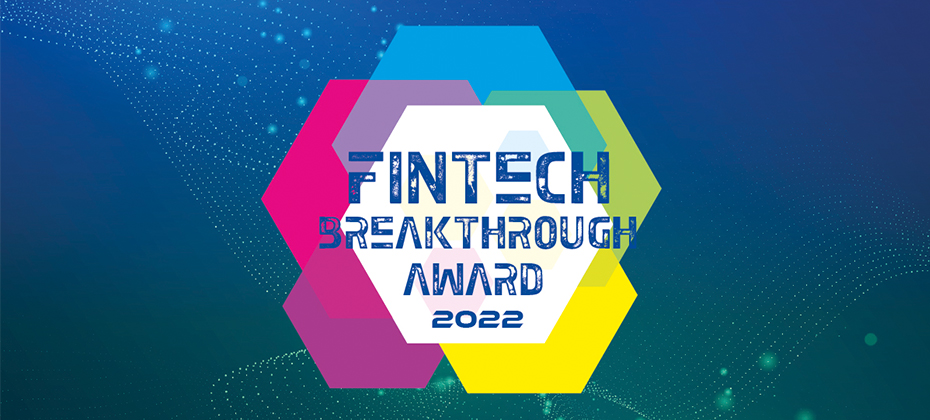Digital Technology

To drive profitable growth and customer retention in today’s highly competitive landscape, businesses must create long-term value for consumers, starting with their initial engagement. A successful onboarding experience would encourage 46% of consumers1 to increase their investments in a product or service. While many organizations have embraced digital transformation to meet evolving consumer demands, a truly exceptional onboarding experience requires a flexible, data-driven solution that ensures each step of customer acquisition in financial services is as quick, seamless, and cohesive as possible. Otherwise, financial institutions may risk losing potential customers to competitors that can offer a better experience. Here are some of the benefits of implementing a flexible, data-driven decisioning platform: Greater efficiency From processing a consumer’s application to verifying their identity, lenders have historically completed these tasks manually, which can add days, if not weeks, to the onboarding process. Not only does this negatively impact the customer experience, but it also takes resources away from other meaningful work. An agile decisioning platform can automate these tedious tasks and accelerate the customer onboarding process, leading to increased efficiency, improved productivity, and lower acquisition costs2. Reduced fraud and risk Onboarding customers quickly is just as important as ensuring fraudsters are stopped early in the process, especially with the rise of cybercrime. However, only 23% of consumers are very confident that companies are taking steps to secure them online. With a layered digital identity verification solution, financial institutions can validate and verify an applicant’s personal information in real time to identify legitimate customers, mitigate fraud, and pursue growth confidently. Increased acceptance rates Today’s consumers demand instant responses and easy experiences when engaging with businesses, and their expectations around onboarding are no different. Traditional processes that take longer and require heavy documentation, greater amounts of information, and continuous back and forth between parties often result in significant customer dropout. In fact, 40% of digital banking consumers3 abandon opening an account online due to lengthy applications. With a flexible solution powered by real-time data and cutting-edge technology, financial institutions can reduce this friction and drive credit decisions faster, leading to more approvals, improved profitability, and higher customer satisfaction. Having a proper customer onboarding strategy in place is crucial to achieving higher acceptance and retention rates. To learn about how Experian can help you optimize your customer acquisition strategy, visit us and be sure to check out our latest infographic. View infographic Visit us 1 The Manifest, Customer Onboarding Strategy: A Guide to Retain Customers, April 2021. 2 Deloitte, Inside magazine issue 16, 2017. 3 The Financial Brand, How Banks Can Increase Their New Loan Business 100%, 2021.

“Businesses are managing vast and growing amounts of consumer data – all while ensuring consumers’ privacy and complying with complex government regulations.” This is one of the many reasons there’s an increasing need for innovative digital identity solutions, as explored in a in Axios in a new Experian advertorial. Experian Identity, an integrated suite of identity solutions, products, and services, solves for challenges presented by the continuing migration of consumers to the internet and the resulting growth of consumer data. Leveraging that data stemming from diverse sources and combining it with advanced technologies, is critical to better determining and understanding a company’s best marketing prospects, as well as making confident decisions that enhance and safeguard the consumer experience. How? By leveraging multidimensional data and adhering to all consumer protection laws and industry self-regulatory standards, businesses can best recognize and connect with their consumers in more personalized, meaningful and secure ways. The Axios article discusses the benefits of Experian Identity, including strengthening fraud detection, solving for identity resolution, and helping to uncover business opportunities through segmenting, targeting and engaging consumers. “While today’s consumers are intensely interested in protecting their personal data and identities, they also want to be recognized and understood by the companies they do business with,” said Kathleen Peters, Chief Innovation Officer of Experian Decision Analytics, in the article. Read more about how Experian’s identity solutions helps businesses stay relevant with audiences, create a positive consumer experience, and meet people’s desire to be recognized in Axios’ new article. AXIOS: Making identities personal Learn more about Experian Identity

Previously, the Global Identity and Fraud Report called for businesses to meet consumer expectations for online recognition and security while improving the digital experience. Organizations have answered this call with investments and new initiatives, but the fraud risk persists and consumers are relying on businesses to protect them. In our latest report, we explore the issues associated with siloed recognition processes, consumer expectations and preferences, and effective risk strategies. We surveyed more than 6,000 consumers and 1,800 businesses worldwide about this connection for our 2022 Global Identity and Fraud Report. This year’s report dives into: How online security yields engagement and trust with today’s digital consumers The role of businesses in protecting online consumers, and the associated benefits The current opportunity for businesses to implement multiple identity and fraud solutions The role that orchestration and outsourcing play in helping companies prevent fraud To earn consumer trust and loyalty, organizations need to leverage automated solutions to identify and protect consumers across their online journeys while providing seamless recognition and low-friction fraud prevention with a robust and flexible fraud platform. To learn more about our findings and how to implement an effective solution, download Experian’s 2022 Global Identity and Fraud Report. Read the report Review your fraud strategy

In the first six months of 2021, there was $590 million in ransomware-related activity, which exceeds the value of $416 million reported for the entirety of 2020 according to the S. Treasury's Financial Crimes Enforcement Network. Constant economic pressure coupled with the ever-increasing volume of data online have created an environment that’s ripe for attacks, leaving businesses and consumers vulnerable to attacks and theft. What are ransomware attacks? Ransomware is a subset of malicious software, AKA malware, that either threatens to publish or block access to data or a computer system. It often takes the form of a cyberattack where criminals take over an organization’s computer network. Once they’ve assumed control, the hackers demand a ransom to restore access to the illicitly encrypted data. Additionally, ransomware attacks and data breaches are now becoming more closely linked, with sensitive data including employees’ personal information, HR records, and more being filtered out and distributed during or after the attack. In fact, Experian has found that 7 of 10 data breaches involve ransomware. The negative impact of ransomware attacks According to the Identity Theft Resource Center, the average ransom demand in 2021 was $5.3 million, a 518% increase from the 2020 average. Experian’s latest Data Breach Response Guide found that businesses were hit with ransomware attacks every 11 seconds in 2021. These attacks also take up to 20% longer to begin breach notifications, leaving businesses even more vulnerable. In addition to the monetary loss and the time spent responding to and recovering from the attack, businesses also stand to suffer reputational damage, because consumer sentiment is that companies are responsible for protecting data. Having a plan in place makes a sizeable impact though, with 90% of consumers being more forgiving of companies that had a response plan in place prior to a breach. How to protect against ransomware attacks Experian’s 2022 Future of Fraud Forecast predicts that ransomware will be a significant fraud threat for companies as fraudsters will look for a sizeable ransom to cede control and potentially steal data from the hacked company. Preparing for the possibility of an attack includes training your staff to spot the signs of a phishing attempt, having a response plan in place, and leveraging partner solutions. To learn more about how Experian helps businesses protect against the fallout of a ransomware attack, visit us, and be sure to read about our other Future of Fraud predictions about cryptocurrency and Buy Now, Pay Later fraud. Request a call Future of Fraud Forecast

Experian recently announced Experian Identity and published an advertorial in American Banker outlining the integrated approach to identity that recognizes the full breadth of the company’s authoritative data solutions that help businesses better connect with their consumers in more personalized, meaningful and secure ways. The efforts address the rapidly changing definition and landscape of identity and take on the importance and needs for identity which span across the entire customer journey. From marketing to a specific consumer’s needs, to facilitating a friction-right customer experience, to protecting personal information. As such, there’s a gap for single-partner providers to help businesses navigate this change, while also putting the needs of the consumer first. “Identity data sets are constantly growing with inputs from new interactions. Many future sources of data have yet to be even conceived or developed,” said Kathleen Peters, Chief Innovation Officer, Experian Decision Analytics. “Staying ahead of the identity market curve is vital, and it requires building and continually evolving an enterprise-scale identity solution that interconnects with your own unique data and systems to create attribute-rich profiles of your customers that work across any identity application. That’s Experian Identity.” Experian Identity underscores the need businesses have to respond to increasing identity needs with interconnected, scalable technology, products and services that optimize the consumer experience. While the integrated approach announcement is new, the capability is not. Experian has been trusted for decades to secure individuals’ identity around the most important decisions in their lives – think purchasing a car or home, being identified at the doctor’s office, and more. As such, consumers remain at the center of every action. Experian Identity offers identity resolution, verification, authentication and protection, and fraud management solutions that include first- and third-party fraud, account takeover, credit card verification, identity resolution and restoration, risk-based authentication, synthetic identity protection and more. Additionally, we’ve included a special blog post introducing Experian’s identity capabilities from Kathleen Peters on the Experian Global News Blog and additional coverage. Stay tuned for more updates. Experian Global News Blog - Making Identities Personal: Experian Helps Businesses Build Consumer Trust American Banker – Making Identities Personal: Building Trust and Differentiating Your Brand Experian White Paper - Making Identities Personal For more information about Experian Identity, visit www.experian.com/identity-solutions.

Experian’s latest Global Insights Report found that more than half of consumers have increased their online spending in the last three months, and 50% say it will increase in the next three months. Life online is here to stay, and consumer expectations have shifted, giving businesses and opportunity to sink or swim when building trust and gaining loyalty. This spring, Experian surveyed 6,000 consumers and 2,000 businesses across all industries to learn more about how, why, and where consumers are interacting with businesses online. Our research found that: Experience is top of mind, with 81% of consumers saying that a positive online experience makes them think more highly of a brand Digital payment options are on the rise with 62% of consumers using mobile wallets and 57% considering buy now, pay later as a replacement for their credit card Security is still a big factor, but 73% of consumers say the onus is on businesses to protect them online Download the report to get all the latest insights into consumer sentiment and how recent changes are impacting business priorities and investments. Download the report

The Marketing Rule of Seven means it usually takes at least seven impressions before a consumer is compelled to act. When extending firm offers of credit to consumers, lenders have long relied on direct mail and more recently email to reach their intended audiences. But what if there are more ways to deliver a credit offer? Let’s explore how digital display retargeting can help you maximize your campaign performance and profitability. What is digital display retargeting? Digital display retargeting allows lenders to present a firm offer of credit on digital and mobile to complement a direct mail or email prescreen campaign. This solution takes credit marketing to a whole new level — instead of relying solely on direct mail or email, lenders can amplify firm offers of credit on channels like social media or authenticated websites to maximize their reach. With spending more time on these channels, digital display retargeting can provide them with an additional opportunity to respond. Reaching the right consumers with the right offer While echoing the same credit offer on multiple channels can help elicit higher response rates, how do lenders decide to which consumer to extend that offer to? Experian’s credit database provides lenders with fresh consumer information to help them determine what kind of credit offers may be most appealing to each unique individual. Through Amplified Prospecting, lenders can then gain accurate consumer identification and matching in digital display channels to ensure offers are reaching consumers most likely to respond. Maximize your campaign reach With the combined strengths of Experian’s consumer credit data and Amplified Prospecting, lenders can extend firm offers of credit to prescreened consumers across multiple touchpoints, helping them to achieve greater visibility and higher response rates. To learn more about how Experian can help you level up your credit marketing campaigns, visit us today. Learn more

“I saw an opportunity to create change instead of asking for it.” Day 2 was charged up with new technology; new ideas; and new, clearer visions of where we can drive change across our industries. Jeff Softley, President, Direct to Consumer, Experian Consumer Services, illustrated how the consumer is at the center of Experian’s business with countless statistics and how our consumer advocacy drives our focus, growth and mission. Wil Lewis, Global Chief of Diversity, Equity and Inclusion; Hiq Lee, President of Business Information Services; and Alex Lintner, Group President, Consumer Information Services, engaged in a panel discussion centered on reimagining inclusion. Keynote: Allyson Felix Allyson Felix, five-time Olympian and most decorated Track & Field athlete, kicked off the day with an inspiring keynote touching on her athletic career, taking challenges head-on and using our platforms to make an impact. Felix, who is racing in the first race of her final season this weekend, is a tireless advocate, life-long learner, who seeks to empower others. “We can all start where we are,” she said. “Small things turn into big things.” Day 2 session highlights From the breakout sessions, the theme of disruption was evident. We dove into how prescreen and prequalification have evolved, a demand that many must adapt to deliver in the post-pandemic world. Financial inclusion was a topic covered across the board, as were the strategies to be enacted to bolster these financial inclusion drivers. One such area addressed was how the rapidly growing buy now, pay later industry advances financial access and inclusion efforts. And speaking of evolution, retention must evolve as well — we heard how retention, recapture and risk strategies are transforming, particularly in the mortgage servicing space. Rapid Model Development and Deployment - Feedback from businesses reflects organizations’ desires for flexible deployment options, flexible integration with existing tech stacks, open source technology and the ability to incorporate multiple data providers. Today’s solutions address that feedback as well as solve for the most rampant market challenges in new, innovative ways. Strategy optimization with Artificial Intelligence and Machine Learning - Over 50% of financial institutions surveyed are using AI/ML in at least one department. Challenges include data management, operation, evolving the analytics program. ML/AI starts with proper data management. For optimization, templatizing ML frameworks is a necessity. ID Verification, Authentication and Fraud - There were $56B in identity fraud losses in 2020, $13B of which were traditional identity fraud losses and $43B related to identity fraud scams. Leveraging strategies is necessary to maintain the critical balance required for identity verification and fraud – mitigating losses and risk exposure, drive optimal customer experience, maintain regulatory compliance. Maximizing Customer Value - The monthly data refresh is a thing of the past. When reimagining account review for risk and marketing purposes, remaining agile is key with increased data freshness for operational efficiency. Keynote: Ashton Kutcher The energy, insights and ideas have been reverberating throughout the venue for the past 48 hours, which set the stage for Ashton Kutcher’s closing keynote. The Chicago Bears fan talked about his career, how hard work wasn’t an option when he was growing up and how part of his assessment process for potential investments – determining whether they create efficiencies in the market – he sometimes thinks of a long-standing, personal benchmark – the air nailer. He talked about his philanthropy efforts, the mission behind his company Thorn, and the ability for people to impact change and achieve "a sense of agency" over the outcome of the future. “That’s the human spirit. That’s the spark that exists – that people understand that you can sit in despair, or you can do something,” he said. It has been an amazing two days – we can’t wait for Vision 2023!

Rewards are among the most appealing features of any credit card. While upfront benefits, like sign-up bonuses and cashback, are most influential in card acquisition, ancillary benefits, like fraud and identity protection, can amplify a card’s overall value.1 Credit card fraud ranked as the second most common form of identity theft in 2021,2 and is expected to become even more frequent as consumers continue to bank and shop online.3 42% of consumers are concerned for the safety of their banking and shopping transactions. With digital identity theft and fraud on the rise, it’s no surprise that safety measures are “very” or “extremely” important to consumers when deciding between different credit cards.4 In response, many card issuers have started to market their security and protection-related benefits more frequently to better capitalize on their cards’ value to consumers. The ways they’ve highlighted these benefits include: A fraud protection campaign From spotlighting their fraud protection benefits in card welcome kits to providing privacy tips on social media, credit card issuers have crafted compelling campaigns to demonstrate their commitment to protecting their customers from fraud and identity theft. In turn, issuers can differentiate their cards from the competition and improve response rates. Reminders about their fraud prevention efforts Issuers have also sent out ongoing reminders outlining the protections their credit cards offer, such as credit monitoring services 5 that notify cardholders of suspicious activity on their credit report. By consistently promoting their efforts to keep their customers’ accounts and data safe, issuers can earn their cardholders’ trust, build loyalty and drive card usage. While benefits like cashback and travel points can help with card acquisition, fraud and identity protection benefits can help drive long-term customer relationships, especially now that card fraud is becoming a growing concern.6 To learn more about how businesses have worked to meet the consumer demand for secure interactions, check out our 2021 Global Identity and Fraud Report. Learn more 1Jonathan O'Connor. "Most Consumers Aren't Aware of Their Credit Cards' Ancillary Benefits. How Does This Impact Card Acquisition and Usage?" TSYS, January 2019 2FTC. "Consumer Sentinel Network" Data Book, 2021 3April Berthene. "Coronavirus pandemic adds $219 billion to US ecommerce sales in 2020-2021" Digital Commerce 360, March 2022 4"Consumers Consider as Many as Six Factors When Choosing Credit Card" PYMTS.com, December 2021 5David McMillin. "Identity theft is a major problem, but these 5 credit card protection programs can help keep you safe" Business Insider, June 2021 6"New FICO Survey Finds Overconfidence Could Put US Consumers at Risk From Scams" Business Wire, February 2022

Experian’s in-person Vision conference returns next Monday, April 11 in Los Angeles, Calif. The event is known for premier thought leadership, net-new insights and the latest and greatest in technology, innovation and data science. This year’s agenda promises to have intentional discussions around tomorrow’s trending topics including financial inclusion, buy now pay later, open banking, the future of fraud, alternative data strategies, and much more. A few spotlight sessions include: Top trends including the future application of the cloud and emerging technologies, emerging regulatory legislation and the broader implications and opportunities of DeFi. A deep dive into strategies around the targeting/marketing revolution and how to deliver in the post-COVID-19 market environments and bolster financial inclusion decisions. An introduction to Experian’s Buy Now Pay Later BureauTM, the industry’s first and only solution designed to address the needs of consumers, BNPL providers, financial institutions and regulators alike. A roundup of sessions addressing innovation in action spanning from real-time verifications, to data-driven automation, and unified platforms from data to deployment to decisioning. Several sessions highlighting future-looking strategies and solutions that leverage alternative data that can increase conversion rates while concurrently reducing risk. Multiple sessions centered on the rapidly changing identity environment and combatting emerging fraud threats. The event will also include a Tech Showcase, where attendees can get a taste of tomorrow today with more than 20 demos and the latest innovations at their fingertips. And, as always, the event features marquee keynote speakers sure to inspire. This year’s featured speakers are Dr. Mohamed A. El-Erian, President of Queens’ College, Cambridge, Chief Economic Advisor at Allianz, and Former CEO and Co-Chief Investment Officer of PIMCO; Allyson Felix, Olympic Gold Medalist, co-founder of Saysh, a footwear and lifestyle brand for women, and Right to Play and Play Works ambassador; and the closing keynote will feature actor, investor, entrepreneur and philanthropist, Ashton Kutcher. Stay tuned for additional highlights and insights on our social media platforms throughout the course of the conference. Follow Experian Insights on Twitter and LinkedIn.

At Experian, we know that financial institutions, fintechs and lenders across the entire spectrum – small, medium and large, are further exploring and adopting AI-powered solutions to unlock growth and improve operational efficiencies. With increasing competition and a dynamic economy, AI-driven strategies across the entire customer lifecycle are no longer a nice to have, they are a must. Our dedication to delivering on this need for our clients is why we are thrilled to be recognized as a Fintech Breakthrough Award winner for the fifth consecutive year. Experian’s Ascend Intelligence ServicesTM (AIS) platform hosts a suite of analytics solutions and has been named “Best Consumer Lending Product” in the sixth annual FinTech Breakthrough Awards. This awards program is conducted by FinTech Breakthrough, an independent market intelligence organization that recognizes the top companies, technologies and products in the global fintech market today. This is the second consecutive year that AIS has been recognized with a FinTech Breakthrough Award, previously being selected for the “Consumer Lending Innovation Award” in 2021. “Winning another award from FinTech Breakthrough is a fantastic validation of the success and momentum of our Ascend Intelligence Services suite. Now more than ever, the world is in a state of constant change and companies are being reactive, with data scientists spending too much time on manual, repetitive data-wrangling tasks, at a time when they cannot afford to do so,” said Shri Santhanam, Experian’s executive vice president and general manager of Global Analytics and AI. “Companies need to be able to rapidly develop and deploy ML-powered models in an agile way at low cost. We are now able to offer this to more lenders no matter their size.” With AIS, Experian can empower financial services firms to make the best decisions across the customer life cycle with rapid model and strategy build, seamless deployment, optimization and continuous monitoring. The AIS suite is comprised of two key solution models: Ascend Intelligence Services Acquire is a managed services offering that enables financial institutions to increase approval rates and control bad debt by acquiring the right customers and providing the best offers. This is accomplished through a rapid AI/ML model build that will help better quantify the risk of an individual applicant. Next, a mathematically optimized decision strategy is designed to provide a more granular view of the applicant and help make the best decision possible based on the institution’s specific business goals and constraints. The combination of the AI/ML model and optimized decision strategy provides increased predictive power that mitigates risk and allows more automated decisions to be made. The model and strategy are seamlessly deployed to help deliver business value quickly. Ascend Intelligence Services™ Limit enables financial institutions to make the right credit limit decisions at account origination and during account management. Limit uses Experian’s data, predictive risk and balance models and our powerful optimization engine to design the right credit limit strategy that maximizes product usage, while keeping losses low. To learn more about how Ascend Intelligence Services can support your business, please explore our solutions page. Learn more For a list of all award winners selected for the 2022 FinTech Breakthrough Awards, click here.

In today’s evolving and competitive market, the stakes are high to deliver both quantity and quality. That is, to deliver growth goals while increasing customer satisfaction. OneAZ Credit Union is the second largest credit union in Arizona, serving over 157,000 members across 21 branches. Wanting to fund more loans faster and offer a better member experience through their existing loan origination system (LOS), OneAZ looked to improve their decisioning system and long-standing underwriting criteria. They partnered with Experian to create an automated underwriting strategy to meet their aggressive approval rate and loss rate goals. By implementing an integrated decisioning system, OneAZ had flexible access to data credit attributes and scores, resulting in increased automation through their existing LOS – meaning they didn’t have to completely overhaul their decisioning systems. Additionally, they leveraged software that enabled champion/challenger strategies and the flexibility to manage their decision criteria. Within one month of implementation, OneAZ saw a 26% increase in loan funding rates and a 25% decrease in manual reviews. They can now pivot quickly to respond to continuously evolving conditions. “The speed at which we can return a decision and our better understanding of future performance has really propelled us in being able to better serve our members,” said John Schooner, VP Credit Risk Management at OneAZ. Read our case study for more insight on how automation and PowerCurve Originations Essentials can move the needle for your organization, including: Streamlined strategy development and execution to minimize costly customizations and coding Comprehensive data assets across multiple sources to ensure ID verification and a holistic view of your prospect Proactive monitoring and real-time visibility to challenge and rapidly adjust strategies as needed Download the full case study

As credit volumes recover from lows observed in 2021, lenders face new challenges – from increasing demand in customer expectations, to heightened competition, market volatility and a fierce war on talent. Many lenders have incorporated the foundational elements of credit analytics and seen significant initial returns. Now, it’s time for lenders to unlock even greater growth opportunities and operational efficiencies by exploring AI-powered solutions. Experian presented on a recent webinar hosted by Lendit Fintech, where Srikanth Geedipali, Senior Vice President of Global Analytics and AI for Experian, joined a panel of industry experts with representation from OPY and Citibank, to speak on how lenders can differentiate themselves by unlocking the power of advanced technologies such as AI and ML to address these emerging challenges. Watch the full webinar, NextGen Applications of AI in the Credit Lifecycle, and learn more about: Emerging trends in the AI/ML space that will drive innovation and differentiated solutions Use-cases for AI/ML across the lending lifecycle and how to leverage MLOps to industrialize analytics and improve speed and agility of decision-making How advanced technologies have driven impact for lenders of all sizes This webinar is a part of Lendit Fintech’s webinar series. To learn more about how leveraging AI/ML can help optimize your lending strategies, contact us today. Learn more about Ascend Intelligence Services

With consumers having more banking options than ever before, loyalty has become the most valuable currency for financial institutions (FI). As fintechs and big tech companies continue to roll out innovative banking and payment options, traditional FIs must rethink their strategies to drive new business, retain existing customers and remain competitive. According to a recent Mintel report, rewards, transparency and customer service are the top three constants when it comes to building loyalty. Here’s how financial institutions can deliver on these fronts to create and maintain lasting customer relationships: Rewards programs and incentives Rewards have long been a key customer retention strategy, with 39% of consumers stating they would remain loyal to their financial service providers if they offered incentives and rewards. While traditional rewards programs that offer points or cash back on everyday purchases remain popular, many companies are expanding beyond the conventional rewards structure to attract new customers and stand out from the competition. For example, one California-based startup enables its cardholders to earn points at every winery, wine club or wine shop, while a health and wellness company rewards its cardholders with extra cash back when they meet their weekly fitness goals. To build and maintain customer loyalty, FIs can follow suit by incentivizing positive financial behavior, such as offering points to customers when their credit score increases or when they reach their monthly savings goal. Being rewarded for improving their financial health can encourage customers to continue making positive and responsible financial decisions. When customers see how much their financial institution invests in their financial well-being, they are more likely to remain loyal to the brand. Nurturing existing customers through rewards programs is also more cost-effective than acquiring new ones. Rewards program members spend 5-20% more than non-members on average, which not only covers operating costs but leads to increased sales and revenue. Transparency over fees Beyond rewards programs and incentives, many FIs have created innovative tools to help customers avoid overdraft fees, such as real-time alerts for low balances. To take it a step further, some have eliminated these fees altogether. While overdraft fees can be an easy source of revenue for financial institutions, they are a pain point for customers, especially for those who are financially vulnerable. Rather than continuing to be saddled with hefty penalties, customers are likely to switch to providers that are more upfront about their fees or have eliminated them outright. To avoid losing current and prospective customers to new competition, FIs need to be more transparent and work toward establishing fairer practices. Quick, friendly, and accessible customer service With today’s consumers having increased expectations for easy, convenient and accessible customer service, many FIs have refined their strategies by becoming digital-first. When customers have a question or concern, they can engage with financial institutions at any time through digital channels, including chat, email or social media. Being accessible at any hour of the day to assist their customers provides FIs with a great opportunity to build trust, loyalty and a positive reputation. By providing exceptional customer service, compelling rewards and being transparent, financial institutions have the power to create long-lasting customer relationships. Learn more about what you can do to retain your best customers or check out how to build lifetime loyalty with Gen Z. Learn more Build loyalty with Gen Z

With consumers continuing to take a digital-first approach to everything from shopping to dating and investing, fraudsters are finding new and innovative ways to commit fraud. To help businesses anticipate and prepare for the road ahead, we created the 2022 Future of Fraud Forecast. Here are the fraud trends we expect to see over the coming year: Buy Now, Pay Never: Buy now, pay later lenders will see an uptick in identity theft and synthetic identity fraud. Beware of Cryptocurrency Scams: Fraudsters will set up cryptocurrency accounts to extract, store and funnel stolen funds, such as the billions of stimulus dollars swindled by criminals. Double the Trouble for Ransomware Attacks: Fraudsters will not only ask for a hefty ransom to cede control back to the companies they’ve hacked but also steal and leverage data from the hacked company. Love, Actually?: Romance scams will continue to see an uptick, with fraudsters asking victims for money or loans to cover fabricated travel costs, medical expenses and more. Digital Elder Abuse Will Rise: Older consumers and other vulnerable digital newbies will be hit with social engineering and account takeover fraud. “Businesses and consumers need to be aware of the creativity and agility that fraudsters are using today, especially in our digital-first world,” said Kathleen Peters, Chief Innovation Officer at Experian Decision Analytics in North America. “Experian continues to leverage data and advanced analytics to develop innovative solutions to help businesses prevent fraudulent behavior and protect consumers.” To learn more about how to protect your business and customers from rising fraud trends, download the Future of Fraud Forecast and check out Experian’s fraud prevention solutions. Future of Fraud Forecast Read Press Release